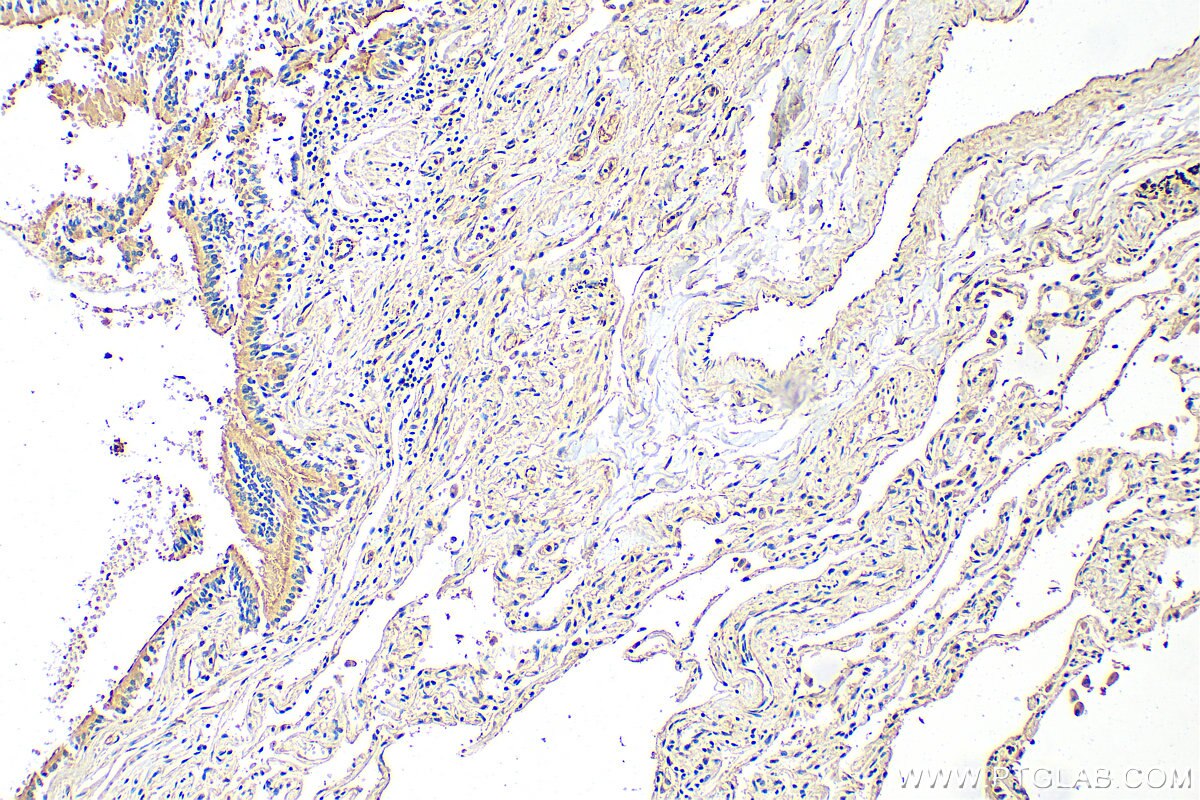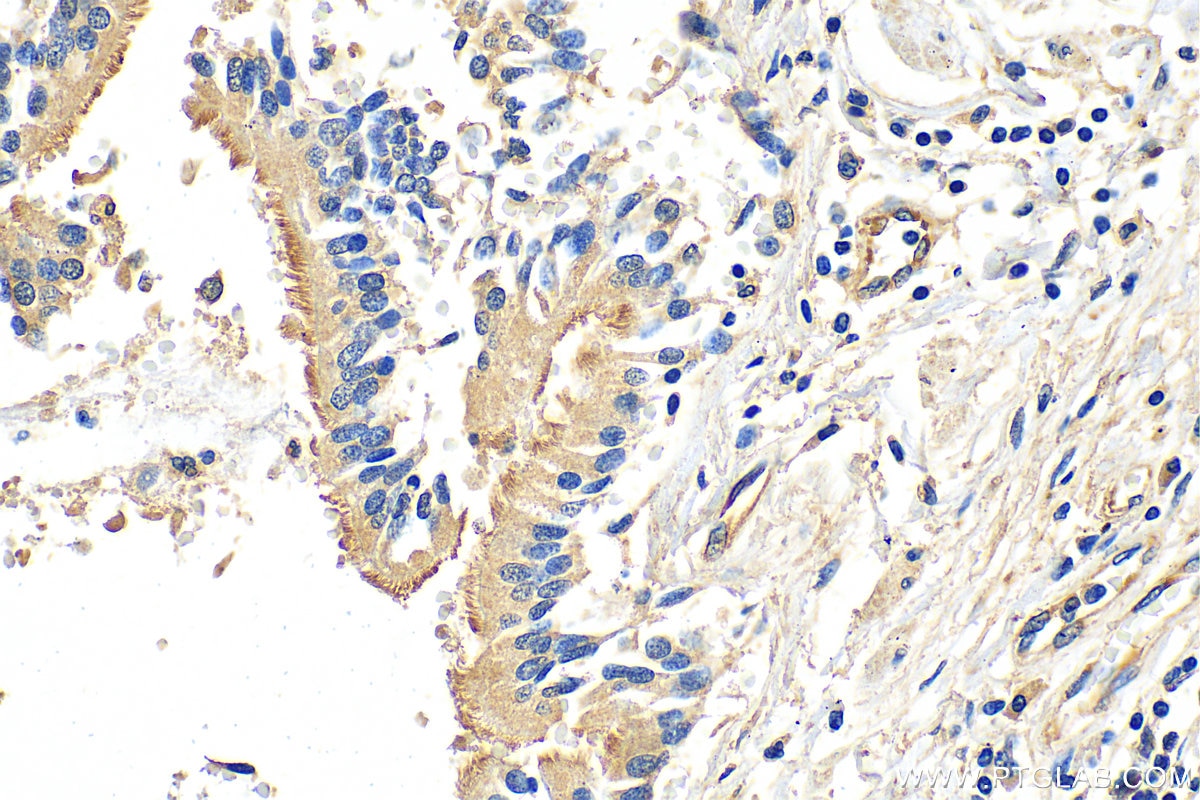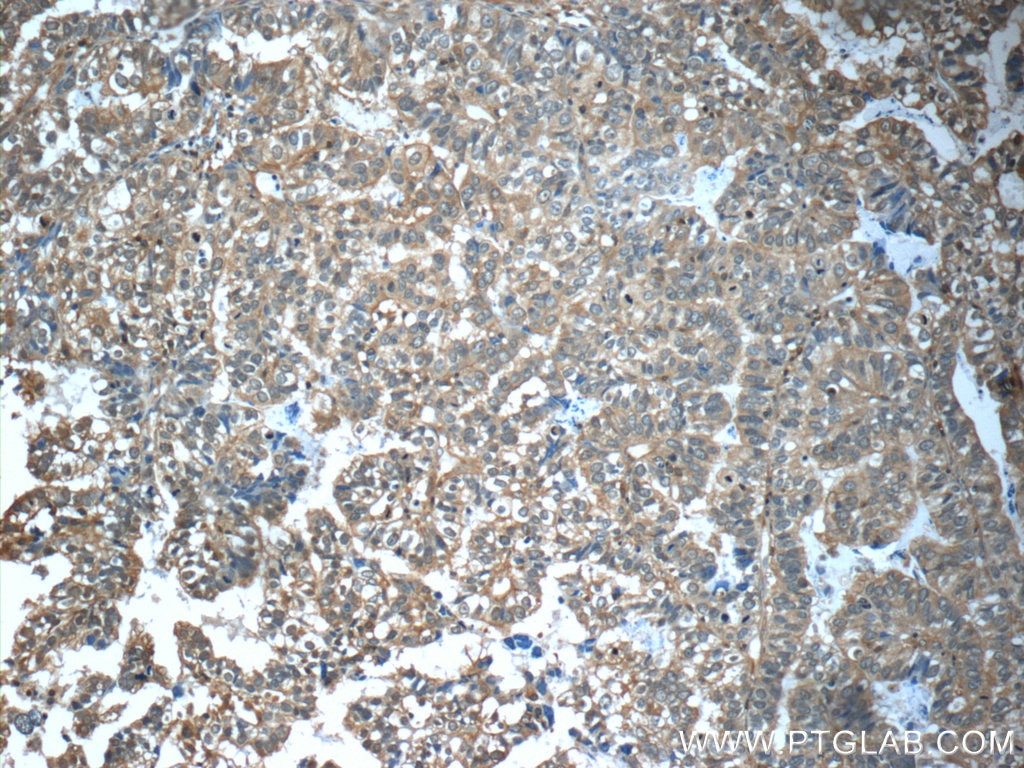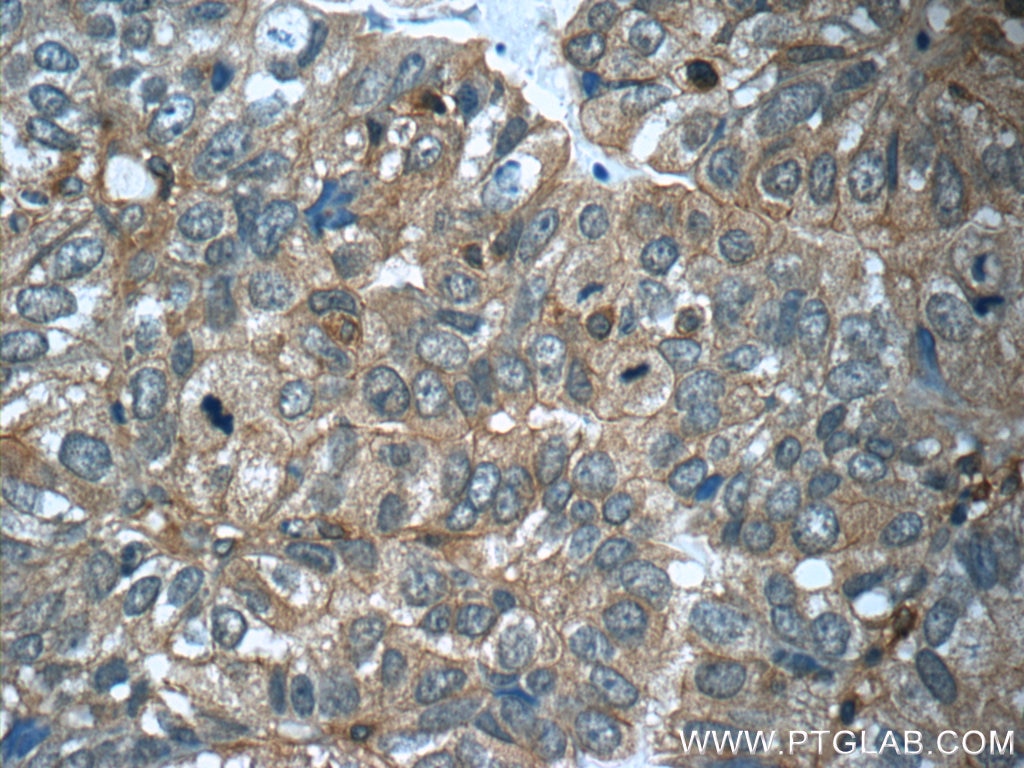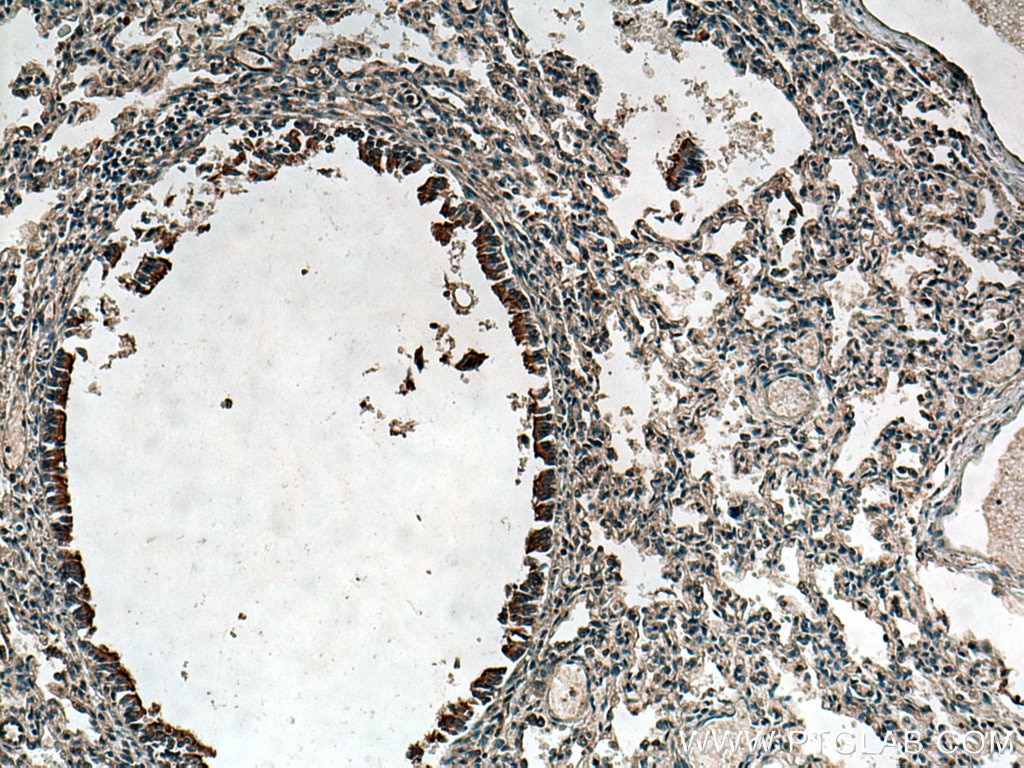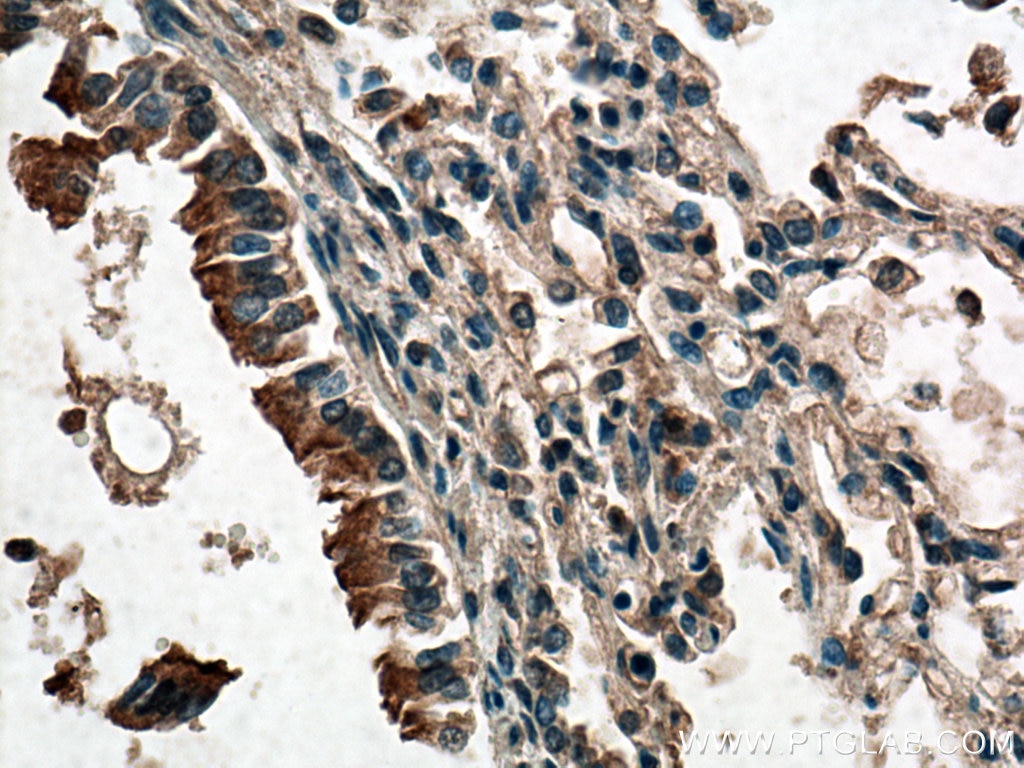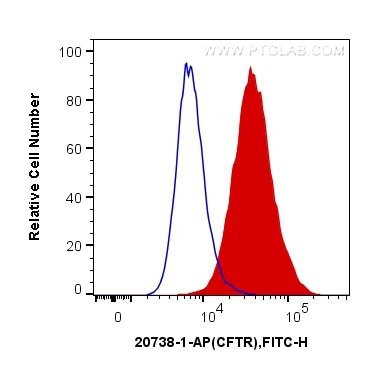Anticorps Polyclonal de lapin anti-CFTR
CFTR Polyclonal Antibody for IHC, FC (Intra), ELISA
Hôte / Isotype
Lapin / IgG
Réactivité testée
Humain et plus (2)
Applications
WB, IHC, IF, FC (Intra), ELISA
Conjugaison
Non conjugué
N° de cat : 20738-1-AP
Synonymes
Galerie de données de validation
Applications testées
| Résultats positifs en IHC | tissu pulmonaire humain, tissu de cancer du sein humain il est suggéré de démasquer l'antigène avec un tampon de TE buffer pH 9.0; (*) À défaut, 'le démasquage de l'antigène peut être 'effectué avec un tampon citrate pH 6,0. |
| Résultats positifs en FC (Intra) | cellules HUVEC, |
Dilution recommandée
| Application | Dilution |
|---|---|
| Immunohistochimie (IHC) | IHC : 1:500-1:2000 |
| Flow Cytometry (FC) (INTRA) | FC (INTRA) : 0.20 ug per 10^6 cells in a 100 µl suspension |
| It is recommended that this reagent should be titrated in each testing system to obtain optimal results. | |
| Sample-dependent, check data in validation data gallery | |
Applications publiées
| WB | See 3 publications below |
| IHC | See 1 publications below |
| IF | See 5 publications below |
Informations sur le produit
20738-1-AP cible CFTR dans les applications de WB, IHC, IF, FC (Intra), ELISA et montre une réactivité avec des échantillons Humain
| Réactivité | Humain |
| Réactivité citée | Humain, porc, souris |
| Hôte / Isotype | Lapin / IgG |
| Clonalité | Polyclonal |
| Type | Anticorps |
| Immunogène | Peptide |
| Nom complet | cystic fibrosis transmembrane conductance regulator (ATP-binding cassette sub-family C, member 7) |
| Masse moléculaire calculée | 168 kDa |
| Numéro d’acquisition GenBank | NM_000492 |
| Symbole du gène | CFTR |
| Identification du gène (NCBI) | 1080 |
| Conjugaison | Non conjugué |
| Forme | Liquide |
| Méthode de purification | Purification par affinité contre l'antigène |
| Tampon de stockage | PBS with 0.02% sodium azide and 50% glycerol |
| Conditions de stockage | Stocker à -20°C. Stable pendant un an après l'expédition. L'aliquotage n'est pas nécessaire pour le stockage à -20oC Les 20ul contiennent 0,1% de BSA. |
Informations générales
What is the human cytogenetic location of the CFTR gene?
7q31.2
What is the predicted molecular weight of CFTR?
168 kDa
Where is CFTR expressed?
CFTR is mainly expressed in apical membranes of vertebrate epithelial cells.
What is the ion selectivity of CFTR?
CFTR is an anion-selective channel, responsible for regulating chloride and bicarbonate transport.
What is the process of CFTR trafficking?
The ER provides the first steps in CFTR folding quality control. CFTR can be degraded by the ER associated degradation (ERAD) pathway, or it is transported to the Golgi for maturation before being trafficked to the cell membrane.
What are the separate domains of CFTR?
CFTR consists of two transmembrane domains, two nucleotide binding domains, and a regulatory domain.
What regulates CFTR?
CFTR activity is ATP-dependent and is regulated by protein kinase A phosphorylation.
What is the role of CFTR?
CFTR functions as a channel for anions, regulating water and ionic homeostasis.
What mutations in CFTR leads to protein degradation?
Deletion of the regulatory domain or the phenylalanine 508 (F508del) results in an increase in CFTR degradation. This degradation then leads to a decrease of secretion product clearance and an increase in viscous mucosal buildup at the epithelial surface of affected organs, the primary symptom of cystic fibrosis. Mutations in CFTR can also lead congenital bilateral absence of vas deferens (CBAVD) or sperm abnormalities in men.
How does CFTR differ from other ATP-binding cassette proteins?
Unlike other proteins in the ABC family, CFTR functions as an ion channel.
PMIDs: 24513531, 24534272, 22966013, 22709980
Protocole
| Product Specific Protocols | |
|---|---|
| IHC protocol for CFTR antibody 20738-1-AP | Download protocol |
| Standard Protocols | |
|---|---|
| Click here to view our Standard Protocols |
Publications
| Species | Application | Title |
|---|---|---|
Elife Gq activity- and β-arrestin-1 scaffolding-mediated ADGRG2/CFTR coupling are required for male fertility. | ||
PLoS One Heterogeneous expression of CFTR in insulin-secreting β-cells of the normal human islet. | ||
J Exp Clin Cancer Res Oridonin promotes endoplasmic reticulum stress via TP53-repressed TCF4 transactivation in colorectal cancer | ||
Int Immunopharmacol A novel transcriptomic signature associated with lymphovascular invasion predicts clinical outcomes, tumor microenvironment, and therapeutic response in lung adenocarcinoma | ||
Biochem Biophys Res Commun Dapagliflozin administration to a mouse model of type 2 diabetes induces DNA methylation and gene expression changes in pancreatic islets | ||
Asian J Androl The role of SLC26A8 homozygous variants in male infertility and flagellum abnormalities |
